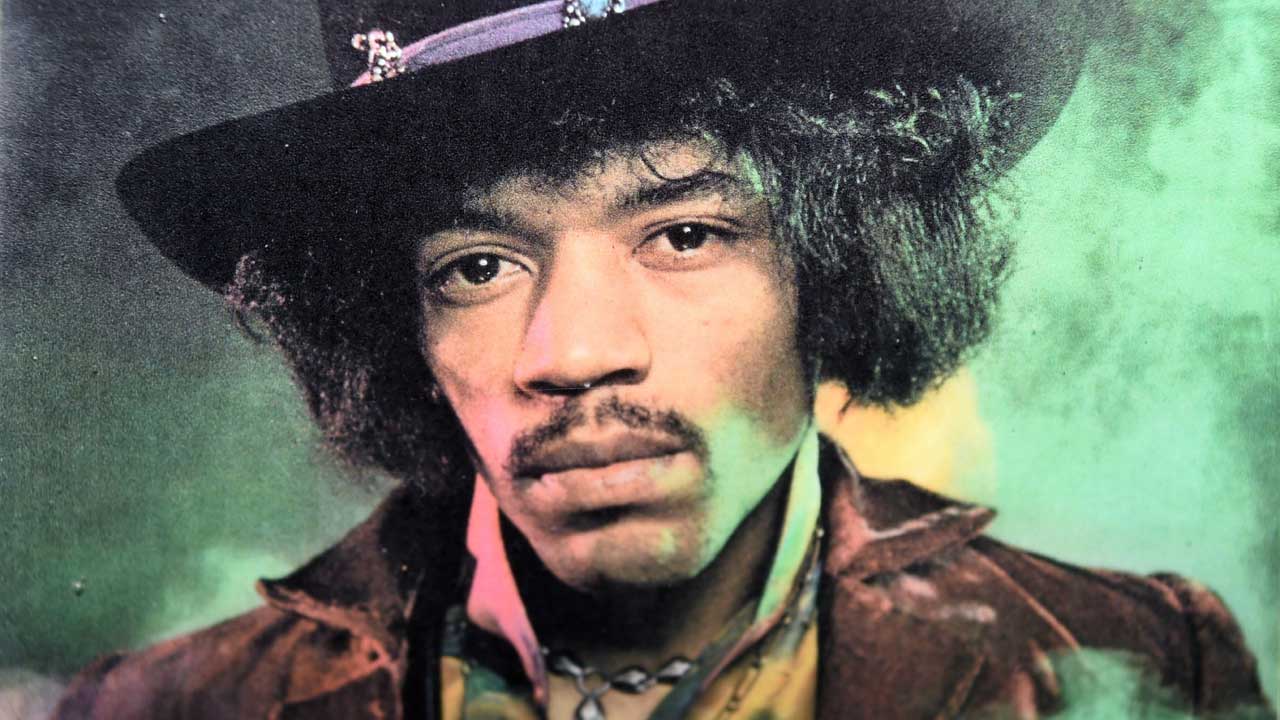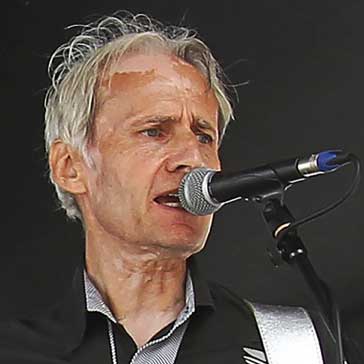Jimi Hendrix struck the UK music scene like a bolt of lightning – illuminating and electrifying everything in his path.
“It was a bombshell,” says Eddie Kramer, the man who engineered and became intimately involved in the recording and mixing of all Hendrix’s key albums. “You hear all the comments at the time from Clapton and Townshend. They were flabbergasted. They all thought that they were really brilliant players, and here comes this guy, and in one evening these stars come down to see him and ‘That’s it. We’re done.’ Here’s this genius from America, flips the guitar upside down, plays it behind his neck and does stuff with the guitar so that their jaws are just dropping to the floor – ‘How the hell did he do that?’ And I still wonder that myself.”
Hendrix arrived in London, a complete unknown, on September 24, 1966, just as the UK blues boom was getting into full swing. John Mayall’s Bluesbreakers With Eric Clapton (aka the Beano album) had been released two months earlier, and the self-titled debut album by the Peter Green-led Fleetwood Mac would be released four months later.
A network of British musicians, and specifically English guitarists – Clapton, Green, Jeff Beck, Jimmy Page and others – had by this point acquired an evangelical devotion to the blues. But for all their painstaking study and deep-seated admiration of the blues, the British disciples were a long way removed from the origins of their inspiration, geographically, culturally and, of course, ethnically.

Hendrix learned about the blues from a place that was much closer to the source. Born in Seattle in 1942 of African-Cherokee-American heritage, he was just nine years old when his parents divorced and 15 when his mother died. During a turbulent adolescence, his acquisition of a five-dollar acoustic guitar soon after his mother’s death provided a major source of solace.
At the age of 19, when the British guitar heroes-to-be were heading off to art school, Hendrix enlisted as a US paratrooper in the 101st Airborne Division. He completed his training, but lasted little more than a year before he was discharged.
A military life was clearly not for him, but the harsh conditions of his time in the 101st instilled a mind-set that served him well in his subsequent life as an itinerant musician, and his first-hand acquaintance with the mechanics of warfare eventually fed into his own creative and theatrical genius, notably in his visceral live performance of Machine Gun (with Band Of Gypsys) and his searing re-imagining of The Star Spangled Banner, performed at Woodstock and elsewhere.
After leaving the military, Hendrix spent a period playing the same gig circuit (the ‘chitlin’’ circuit) that the original bluesmen had played. More than that, he played in the backing bands of a succession of R&B stars including Little Richard, Ike & Tina Turner, Slim Harpo and the Isley Brothers. He also played as a session man on studio recordings by Little Richard, the Isley Brothers, Don Covay and many others.
“Imagine if you were in this R&B unit with Little Richard or whoever and you put one foot out of step, you get fined five bucks,” Kramer says. “So think about how Jimi was raised. His dad was pretty tough on him. He went in the army. He did the chitlin’ circuit. And all of that was discipline – teaching him what to do and what not to do. But then there’s this thing boiling up inside him, thinking: ‘Oh man, I got these sounds in my head…’ And by the time he hits the streets of New York – it’s now 1965, ’66 – he’s got these ideas and they’re just coming out. And when Chas Chandler gets to hear him for the first time in ’66, at the Cafe Wha?, he’s pretty well-formed, he’s got it all down.”
Chandler, the former bass player with The Animals, realised he’d struck gold the moment he first clapped eyes on Hendrix in a scruffy club in Greenwich Village. He became his manager and whisked him off to London, where he set about getting him with a band and a recording contract.
Quite apart from his prodigious talent, Hendrix brought a bracing dose of authenticity to the UK blues boom. Here was a black, American survivor who had been on the road and in the studio with the original R&B legends. As writer Charles Shaar Murray put it: “Hendrix was everything the Townshends and Mayalls and Jaggers and Claptons had only pretended to be.”
Not only that, Hendrix also combined the talents of all those English blues-rock stars in one super-exotic package. In the first instance, he was a guitar hero that even Clapton looked up to. But he was also a songwriter to match Townshend, a frontman/showman on the scale of Jagger and a singer to match any of them. Not since Chuck Berry had one individual star held all the trump cards in this way. When Hendrix hit UK TV screens for the first time, in December 1966, singing Hey Joe and playing the guitar with his teeth, the effect was seismic. He was simultaneously The Real Thing and a peacock from another planet.
Kramer gives Chandler credit not only for recognising Hendrix’s talent but also for nurturing it. When Chandler met him, Hendrix had not started songwriting with any serious intent.
“Chas said: ‘You have to write songs’,” Kramer recalls. “And they sat up night after night in Chas’s apartment, where they would play these wonderful board games. They would read science-fiction books and science-fiction comics, and a lot of that was Chas’s influence on Jimi, and Jimi just sort of absorbing it all and becoming a great songwriter.”
Hendrix’s attachment to the blues and his knowledge of the form was deep and enduring. Throughout his career he played a variety of blues standards, often transforming them into racing juggernauts or customising them for his own souped-up purposes: Rock Me Baby (BB King), Johnny B. Goode (Chuck Berry), Killing Floor (Howlin’ Wolf), Bleeding Heart (Elmore James) and others.
Red House, his own composition, on his debut album Are You Experienced (1967) demonstrated Hendrix’s complete mastery of the conventional 12-bar, electric blues-group format, while his acoustic guitar playing on another of his own songs, Hear My Train A Comin’ (aka Get My Heart Back Together), showed a keen awareness of the work of country-blues pioneers such as Robert Johnson and Lead Belly. And blues sequences informed many of his other songs: Highway Chile, Stone Free, Little Miss Lover, I Don’t Live Today, Voodoo Child (Slight Return) and others which used a (loose) blues template as a starting point to spin off into a kaleidoscope of rock and psychedelic variations.
Beyond purely technical notions, the blues is about conjuring a certain feeling in music, and Hendrix had that feeling – in abundance.
“His most fundamental musical instincts were those of a bluesman,” says Charles Shaar Murray in his award-winning Hendrix biography Crosstown Traffic. “Had he been born even five or ten years earlier, he would most likely have become one of the ‘younger bluesmen’… the description generally applied by blues critics to the likes of Buddy Guy and Junior Wells.”
Hendrix’s most fully realised blues statement was Voodoo Chile, the 15-minute epic that dominated his third and final studio album, Electric Ladyland. Released in 1968. Here was a track that simultaneously evoked the history of the deepest blues and a futuristic vision of where blues-rock could ultimately go.
Essentially a long jam with a vocal part arranged as a 12-bar blues while the chord sequence stayed (for the most part) rooted to the spot, Voodoo Chile invoked the mystical folklore of Robert Johnson and Muddy Waters as Hendrix cast himself in the role of some devilish outsider, while his guitar travelled with the lyric to ‘Jupiter’s sulphur mines’ and the ‘outskirts of infinity…’

The Deluxe Edition 50th Anniversary box set of Electric Ladyland, released in 2018, included a new 5.1 surround-sound mix by Kramer, along with previously unreleased demos, alternative takes and other goodies, all recorded during a period that marked the most extraordinary changes in Hendrix’s life and in the music world itself.
Recording began at the end of 1967 at Olympic Studios in London on four-track equipment with Chandler producing, and ended on a 12-track machine at the Record Plant in New York with the credit: “Produced and directed by Jimi Hendrix”.
“It was a very interesting time,” says Kramer, who followed the trail from London to New York as recording progressed. “Jimi was coming back to America to live. And that’s a big deal in his life. He’s coming back as a world-recognised rock star. So there’s a lot of psychological stuff that’s going on. He was so proud to come back to New York, and he was revisiting the old haunts in the Village where he had been bumming around just a year and a half before that. Can you imagine what that must have felt like to him?”
When Kramer arrived in New York in April ’68, he immediately sensed a tension between Chandler and Hendrix: “It wasn’t a happy thing, because Jimi was hanging out at the Scene Club, bringing fifteen or twenty people into the control room. And Chas wasn’t going to have any of that. Jimi wasn’t playing or performing for the record or the album, or for Chas, for that matter, he was playing for the audience. That was the beginning of the break-up, and Chas left and then it was Jimi and I working on the record together.”
Hendrix roamed far and wide on Electric Ladyland – which became, in effect, a prototype concept album with songs such as 1983…(A Merman I Should Turn To Be) which evolved into mini-symphonies with some surprising influences. Kramer remembers going over to Hendrix’s hotel room on one occasion to drop off some rough mixes: “I was looking around the room, and he had this record player and a huge pile of classical albums lying around on the table – Bach, Brahms, Beethoven, Tchaikovsky. I said: ‘Jimi, I had no idea you were into classical music.’ ‘Yeah, man,’ he said. ‘I get a lot of my inspiration from that stuff.’ From deep blues to classical – he was a musical sponge.
“Electric Ladyland was one of those albums that I look back on now and think: ‘Good grief! What the hell were we doing?’” Kramer continues. “It was such experimental stuff. Nobody had ever attempted to do a double album of that type at that time. Jimi wanted to have this freewheeling blues, experimental, acid-rocky, crazy sort of thing, but all the bits work together, I think.”

